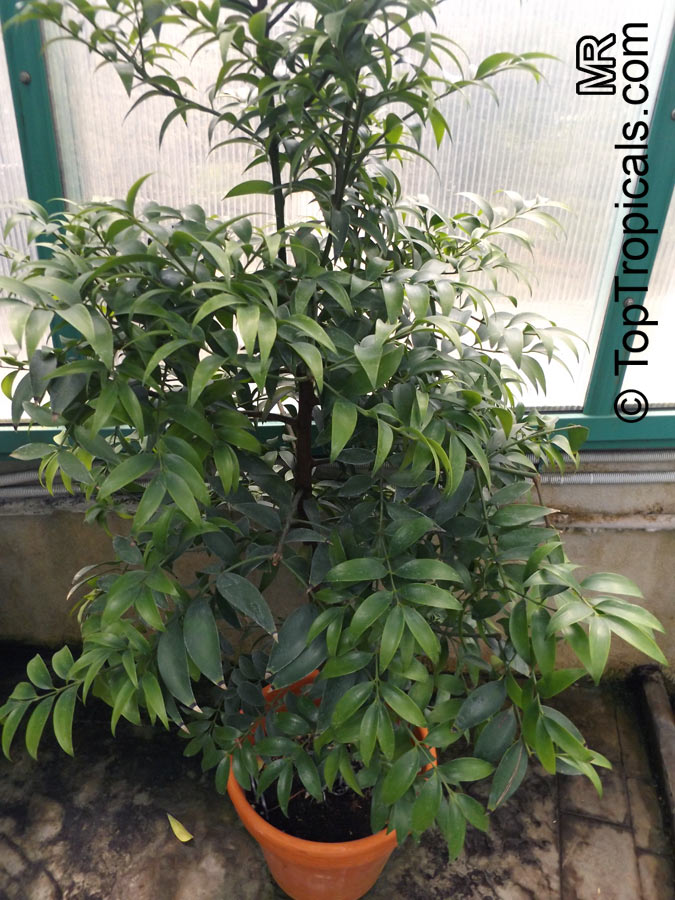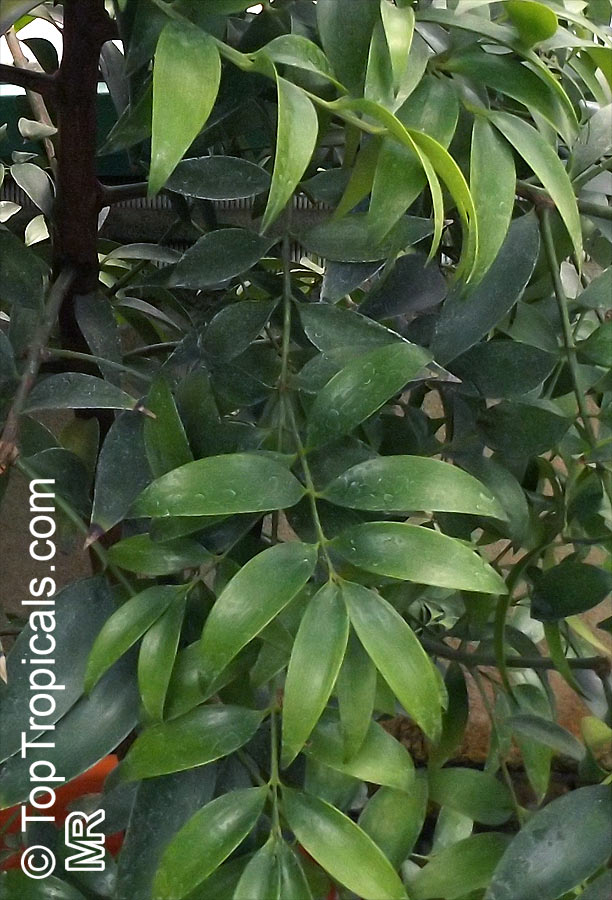Pictogram Guide · Mouse over pictogram for definition
Nageia nagi, Podocarpus nagi, Myrica nagi
Asian Bayberry, Broadleaf PodocarpusFamily: Podocarpaceae
Origin: Japan, China








It is native to Japan and China, and is a commonly seen tree in the wild. One of the features of Nageia nagi is its ability to be used for bonsai. It is an evergreen tree that only grows up to 10-20 ft in height. It has a moderate growth rate, so you will have to be patient if you plan on using it for bonsai.
Nageia nagi thrives in full sun, however it can tolerate semi-shade as well. It needs ample water, but not too much. Its ideal environment is one with regular water, neither too little nor too much. In warmer climates, it's best to grow Nageia nagi in the ground, however if you live in a colder climate, growing it in a pot is the better option. In cold regions, it's important to ensure the pot has drainage holes and use a soil mix suited for a container plant.
Nageia nagi is suitable for USDA growing zones 8-10. Pruning is essential for the development of a good bonsai. Nageia nagi needs light pruning throughout the year to maintain its shape. You can also lightly prune your Nageia nagi during the growing season to encourage new growth and thicken the foliage.
Nageia nagi is a great tree to use in bonsai, due to its moderate growth rate and ability to withstand different growing conditions. It can tolerate a variety of light and temperatures, yet still needs regular pruning. With the right environment and care, Nageia nagi can grow up to 10-20 ft, and make a great addition to any garden.
Similar plants:
- Nageia motleyi, Podocarpus motleyi (Nageia)
- Nageia wallichiana, Nageia blumei, Podocarpus blumei, Podocarpus wallichianus (Nageia)
- Podocarpus rumphii, Nageia rumphii, Podocarpus koordersii, Podocarpus philippinensis (Malakauayan, Kayu China)
- Afrocarpus falcatus, Podocarpus falcatus (Common Yellowwood, Bastard Yellowwood, African Pine Tree, Weeping Yew)
- Afrocarpus gracilior, Podocarpus gracilior (African Fern Pine)
- Afrocarpus mannii, Podocarpus mannii (Afrocarpus)
- Podocarpus elatus (Plum Pine, Australian plum)
- Podocarpus elongatus (Breede River Yellowwood )
- Podocarpus falcatus (Outeniqua Yellowwood)
- Podocarpus macrophyllus (Buddhist Pine, Chinese Yew, Kusamaki, Inumaki)


